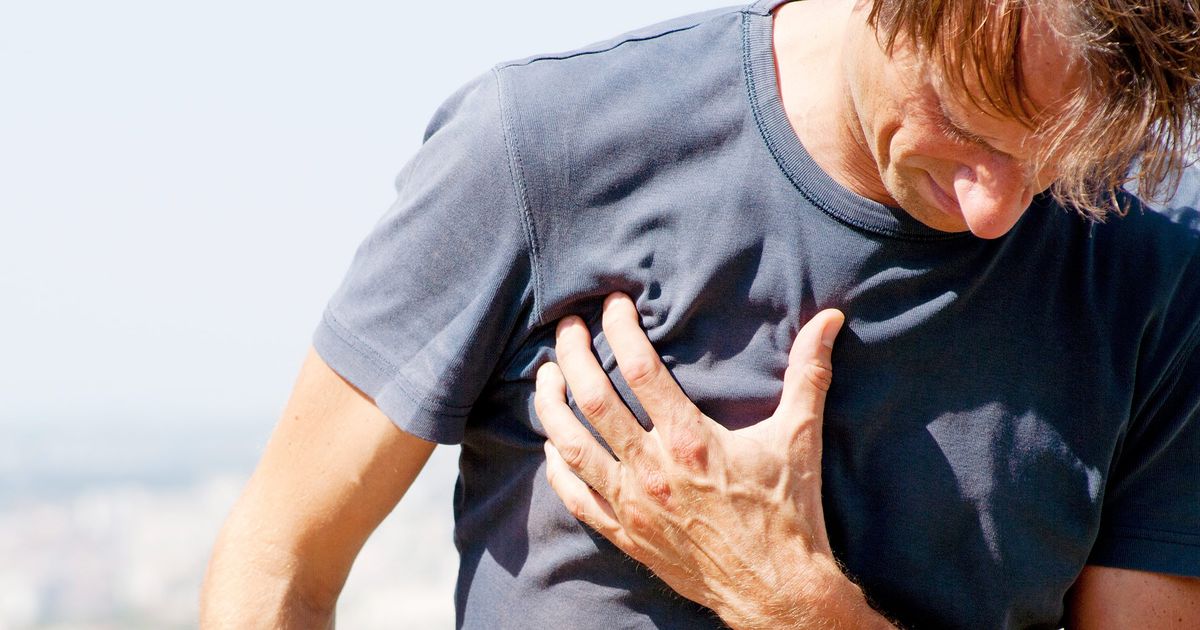What Causes Pain In The Right Side Of The Chest?
An individual's chest contains multiple organs and structures that perform different functions. The right side of the chest houses the right side of the heart, ascending aorta, pulmonary blood vessels, lymph nodes, nerves, ribs, upper spine, right lung, and esophagus. Pain that develops on the right side of the chest can be due to a local problem in that region, or it can be referred pain. Referred pain describes when a nerve under pressure or damaged runs through the chest is caused by a problem that does not originate in this region. Symptoms of right-sided chest pain can be persistent or intermittent. Depending on its cause, right-sided chest pain can be acute or chronic.
Heartburn Or Acid Reflux

An individual who experiences pain in the right side of their chest may be affected by heartburn or acid reflux. Heartburn is a symptom where an individual feels a burning sensation in the chest due to inflammation in their esophagus. Acid reflux is a digestive condition that may include the symptoms of heartburn, sore throat, upset stomach, pain in the abdomen, discomfort in the abdomen, bloating, and throat tightness.
The most common causes of heartburn and acid reflux that trigger pain in the right side of the chest include obesity, smoking, drinking alcohol, certain medications, consuming certain types of food, eating too quickly, eating too close to bedtime, eating large meals, pregnancy, diabetes, and hiatal hernia. Heartburn and acid reflux are diagnosed based on symptom history, physical examination, and sometimes an upper GI endoscopy.
Anxiety Or Stress

Anxiety is a disorder characterized by overwhelming feelings of nervousness, fear, and worry. While feelings of nervousness, fear, and worry are normal in certain situations, it is not normal for these feelings to be frequent and persistent. Anxiety can evolve to the point where it begins to manifest as physical reactions in an affected in the body. These reactions may include increased heart rate, increased respiratory rate, increased blood pressure, and increased sweating.
The anxiety that produces these physical reactions too frequently can increase the risk of heart problems. Stress is the feeling of physical or emotional tension that may have been triggered by certain events or environmental factors. Stress is a good reaction in situations where danger is present, but too much stress can be detrimental to an individual's health. Stress produces the same physical reactions as anxiety, and such changes in the body can cause an individual to experience right-sided chest pain.
Muscle Strain

An individual who has pain in the right side of their chest may have a muscle strain in that area. A muscle strain is also commonly referred to as a pulled muscle and occurs when an individual overstretches or tears tissue in a certain muscle. Muscle strain is a common occurrence in the chest because there are three vital muscles, called intercostal muscles, present in the upper trunk. The intercostal muscles stabilize an individual's upper body and help them breathe properly.
The most common cause of a muscle strain in the upper chest is from the overuse of the affected muscle. Reaching the arms above the head for extended periods, skipping warm-ups before physical activity, lifting while twisting the body, poor flexibility, and injury from malfunctioning equipment are all common causes of muscle strain in the chest. An individual who has a muscle strain in their upper torso that is causing right-sided chest pain may experience swelling, pain when breathing, bruising, and muscle spasms.
Pulmonary Hypertension

An individual who has frequent episodes of achy pain in the right side of their chest may be affected by pulmonary hypertension, a condition where the blood pressure within the pulmonary arteries becomes too high. Pulmonary hypertension causes the small capillaries in the lungs to become blocked, damaged, or narrowed. Blood is no longer able to flow through the lungs properly, and the lower right chamber of the heart has to work twice as hard to compromise for this malfunction.
Pulmonary hypertension is a progressive condition that becomes worse over time. Symptoms of pulmonary hypertension include breathlessness, fatigue, fainting spells, dizziness, edema in the ankles, fluid buildup in the abdomen, blue tint to the skin and lips, racing pulse, heart palpitations, chest pressure, and pain in the right side of the chest.
Chest Trauma

Individuals impacted by any form of trauma to their chest may be affected by ongoing pain in the right side of the chest as a complication of their injury. Common injuries that produce trauma in the chest include bruising of the ribs, object penetration into the chest, rib fracture, heart contusions, and muscle tearing. Many individuals who incur a traumatic injury to their chest experience the inability to expand their lungs normally, pain in the affected part of the chest, crunching sounds in the ribs, coughing up blood, and an absence of expansion in one side of the chest wall.
Some chest injuries cause internal bleeding from the rupture of one of the main blood vessels that run through the chest wall. Pain that develops in the right side of an individual's chest when they have experienced trauma to the area may indicate a broken right rib, broken right collarbone, damage to the muscular tissues that make up the right side of the heart, and damage to the tissues that make up the right lung.
